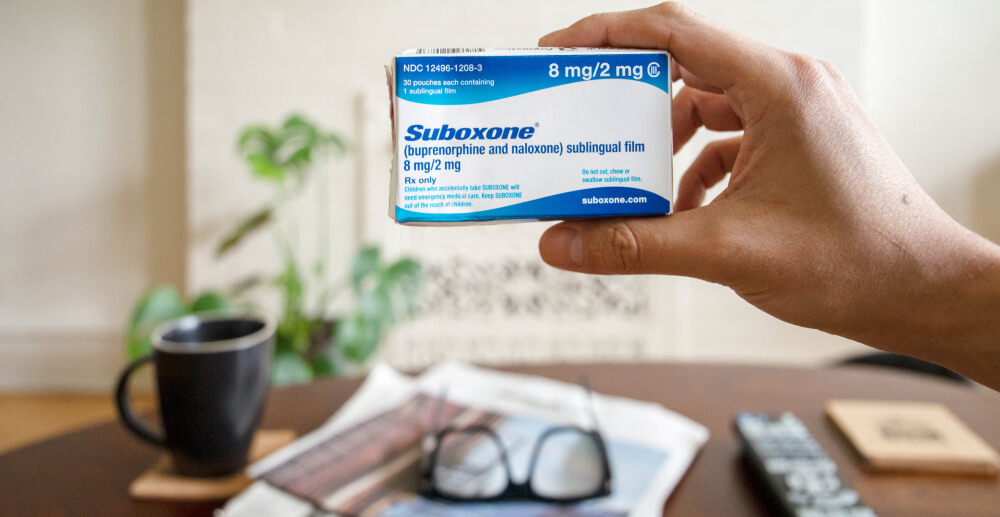You might wonder how (or if) you can travel while being prescribed Suboxone or methadone. This blog will give you some helpful information about traveling when you take medication for opioid use disorder.
The term “agonist medication” means an opioid-based medicine used to treat the cravings, withdrawal, and brain changes associated with opioid addiction. The two most commonly prescribed types of opioid agonist drugs prescribed for opioid use disorder are methadone and buprenorphine. Wondering whether or not you can travel, especially for extended periods, is a valid question, especially if your provider requires you to come in daily for dosing, or will only prescribe you a week’s worth at a time, as is common with these types of medications. Rules, regulations, and typical practices differ by medication. Here are some of the facts when it comes to traveling with methadone and buprenorphine:
Traveling when you’re in buprenorphine treatment
Buprenorphine is generally less restricted than methadone because federal guidelines allow providers to prescribe patients the drug for longer periods the way they can with other medicines. However, licensed Opioid Treatment Providers (OTPs)–what we often call “methadone clinics”—must dispense medication through their facility, which includes buprenorphine if they choose to prescribe it.
Each substance use disorder program or physician can impose their own regulations on how much buprenorphine they prescribe at a time. Intensive outpatient programs(IoP), for example, often require daily participation in groups and therapy, and therefore also dispense the medication daily. Another common practice is for physicians to prescribe the medication to new patients for one week at a time, extending that as the patient stabilizes in treatment. So how do these practices play out when a patient needs to travel?
If you are traveling for only a few days, you should not have an issue. Even if your provider requires daily dosing, they will typically have no problem giving you a couple of days’ worth of take-homes if you are stabilized on the medication and doing well. It is probably a good idea to avoid planning trips, when possible, during the induction phase of your treatment. Many providers want to be able to check in with patients during the first few days or weeks on the medication, to ensure that patients don’t have any issues like precipitated withdrawal, side-effects, or allergic reactions, and to get the patient on an effective dose. Some programs might require you to prove that you’re traveling by showing a copy of your plane tickets or other travel itineraries. Putting the stigmatizing elements of such a practice aside for the moment, getting buprenorphine take-homes should be a relatively easy process.
In all cases, give your provider as much notice as possible when traveling, especially if you are traveling out of state. This will allow your provider to work with you when it comes to prescribing enough medication to last for the full length of your trip. Some issues might arise regarding insurance. For example, it might not be possible to get an early refill covered. This could happen if you change the dates on which you receive prescriptions to accommodate your trip. If you’re planning a trip that exceeds a month, your insurance might be unwilling to cover more than a month’s worth of medication at a time. Some providers, including WorkIt, will not transfer buprenorphine prescriptions to a different state. For this reason, it is important to plan ahead with your provider, and in some cases, also with your insurance.
Traveling when you’re in methadone treatment
Traveling with methadone can be a bit trickier, both because of actual federal guidelines and also due to plan ol’ stigma. Because methadone is a highly regulated and powerful full opioid agonist, some practitioners are hyper-vigilant about deterring misuse or diversion. It is essential for patients on methadone to plan ahead with their providers.
In most states, it is not hard for providers to prescribe take-homes for patients. Regardless, some programs might have their own policies in place that can make it more difficult to get enough take-homes to cover a full trip. Methadone patients must typically “earn” their regular take-homes, accruing days off from clinic dosing as their time of abstinence (or perceived abstinence) increases. For newer patients, who have none or only a few take-homes, some providers might be hesitant to prescribe take-homes for a trip. In these cases, it always helps to provide proof of your travel plans, such as tickets or other travel itineraries. Sometimes, especially with longer trips, programs will still feel unsafe prescribing take-home doses for the entire duration of travel. In these cases, they will instead ask you to partner with another program for guest dosing.
Guest dosing means that you will be going to an opioid treatment provider located at your travel destination to receive your daily dose of methadone. Theoretically, setting up guest dosing should be as simple as a phone call from your home provider to the guest provider (you will probably be required to provide their contact information to your counselor). Unfortunately, theory and practice can sometimes differ widely. It may take days or even weeks for two programs to connect, especially if they are in different time zones. So make sure to plan ahead as early as possible, and stay on top of your counselor. Don’t assume everything is handled just because you have turned in your travel dates and the necessary contact information; check in with your counselor until you receive verification on both ends that guest dosing is set up.
If you are paying through insurance for your methadone, traveling might mean you will have to cover that cost out-of-pocket. If you’re guest dosing in a different state, your insurance may not cover it. Even if you’re guest dosing in an area your insurance covers, that particular clinic might not accept your insurance. Yes, that applies to Medicaid too. It’s a good idea to find out ahead of time whether or not your insurance will cover your medication while traveling. If it doesn’t, make sure to calculate medication costs into your travel plans. The last thing you want is to go into withdrawal during an important business conference or while out enjoying your vacation.
Flying with your medication
In general, there are a few rules you should always follow if you are using commercial air transportation. These same rules apply to medication for opioid use disorder. The most important is to keep your medication in your carry-on bag or personal item. Don’t pack them away in luggage. If your luggage is lost, then so is your medication. If your luggage is searched and mishandled, causing the meds to fall out or open and spill, that’s that. And while some other types of medication can be easily refilled, not so for opioid-based medication—especially methadone and buprenorphine.
Carry proof of your valid prescription with you as well. Often methadone and buprenorphine bottles come with labels that include your name and prescription details. If want to be extra cautious, however, bring a copy of your prescription, or ask your provider for a note that includes your prescription details, and the name and number of your provider. The reality is that TSA is not looking for drugs—they’re looking for safety threats to the aircraft and passengers. So your medication is unlikely to be of much interest to them. Nonetheless, it’s a good idea to be safe.
Some people receive liquid methadone and have concerns about bringing that onboard an aircraft. TSA does get testy about liquids. But don’t worry. In general, passengers are allowed to bring containers of liquids under 3.4 ounces that can fit into a quart-sized, resealable bag. Most methadone prescriptions fit that description—but if yours doesn’t, the TSA blog says that you can bring liquid medication as a carry-on even if it exceeds 3.4 ounces and does not come in a bag. They advise you to tell the TSA agent about your medication before going through the scanner. The blog also warns that your liquid medication may be subject to additional screening, including asking you to open the container.
Traveling while taking medication for opioid use disorder can be a little extra complicated. Hopefully, there will be a day when these medicines are regarded like any other essential medications and that will no longer be the case. But you don’t have to wait for society to change to do some traveling. With a little extra planning ahead and clear communication with your provider, it is possible to get away from home while on methadone or buprenorphine.
This video includes some travel tips for traveling with Suboxone (buprenorphine/naloxone) or other buprenorphine medications:








